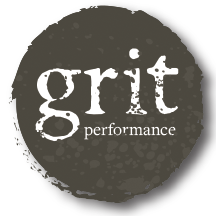I spent last Sunday on a 22 mile mountain bike ride with my 10 year old son. I set him up for success, lots of downhill, some technical, minimal hill climbs, but it was over a 3 hour ride nonetheless. By the time we were done I had the distinct impression that training as a 10 year old was an untapped strategy for athletes in any discipline.
Assume You Will Make It
I ride on a fancy shmancy full suspension 29er. My son recently upgraded to a 26” hard tail, but has been on a 24” with a locked out fork and bald tires until Saturday. Regardless of what each of us were riding there was one main difference in how we approached our ride: my son assumes he will get up and get over anything he tries. Anything. Every obstacle that he approached he sped up, took his hand off his brakes and went for it - which is the exact opposite of how his mother (me) rides. He does this when he skis as well - his mentality is consistently “why wouldn’t I make it?” He is not afraid of looking silly, stumbling, risking failure or even bumps and bruises. Athletes that adopt this mindset find themselves more comfortable being on the edge of their abilities because it becomes the norm instead of the exception in their sport. Our brains are on the lookout for danger and anxious responses; my son is training his brain to be used to challenges and relax around them with his “can do” approach. The strategy is priming his brain to relax, and when it relaxes the rest of his body stays calm and fluid - ready to adapt to whatever the terrain throws at him.
Thumbs up When You Fall
I was the mother with the kid in diapers who could ski on his own. So I was also the mother who had to watch him blow up, yard sale, and get stuck in the trees (see #1 Assume You Will Make It). Since he insisted on skiing wherever he wanted he developed a habit of exploding and would give me a raised thumbs up from wherever he landed so i knew it was just an ugly but safe fall. His now 10 year old self still gives me the thumbs up when he falls and its a great strategy. He is an athlete that doesn’t take his falls seriously. His ego is not bruised when he is unsuccessful in his attempts, he actually celebrates the “epic fail”. To be able to celebrate an epic fail is to fully enjoy the attempts we make as athletes. To not beat ourselves up for trying keeps us in line when we set our goals, whether in competition, a training ride, or a day with our friends. Make sure you give yourself the proverbial thumbs up when you make an attempt that doesn’t end the way you envisioned it.
Go When You Don’t Want to Go
Our long ride started with “Do I have to? I don’t want to go” whining at our house. This is a typical conversation that occurs for about 10 minutes before he begrudgingly gets on his gear and is resigned to being “forced” to do something that will take effort and time. The attitude lasts until we get to the trailhead and is never heard again. He has learned at an early age that rarely do we regret getting on our bikes or working out. Pack your gear and take it to work, lock your bike on the back and don’t think about it till the end of the day. And then go.
Ride (or ski or run) Over Everything
I couldn’t figure out why my son couldn’t ride in a straight line. He kept veering from one edge of the trail to the other, making a serpentine out of a straightaway. I decided to follow him and quickly learned that his crazy riding was intentional. It allowed him to hit every rock and obstacle, improving his riding simply by having fun. He had made a game out of riding that would inevitably lead to improved skills without increased stress or effort. Take a different line or find at least one move to challenge yourself every time you ride. Eventually the gap between fear and competence will shrink out of consistent exposure. And it’s really fun.
Celebrate Your Day
It was no surprise when my son would say something to make me feel good, that’s just who he is. “Nice job, Mom!”, “I knew you could make that!” were comments I heard throughout the day. My surprise came when I heard him telling himself that as well. He celebrated throughout the day when he was successful or made a good move. I wondered what that was like and started patting myself on the back whenever I landed something new, got up and over something hard, or kept my hands off the brakes while cornering. At first I felt kind of silly, whooping out loud and yelling “Yes!!” to myself. But then I started to look forward to the celebration - like giving myself my own gold star. Who doesn’t like a gold star? It made the hard parts of the day easier, allowed me to forgive myself when I wasn’t successful, and I continually had something positive to look at after my ride. And sometimes you need more than a gold star. After our long ride we required celebratory tacos to go thru our stories, embellish when necessary and plan for our next “training session” together.
